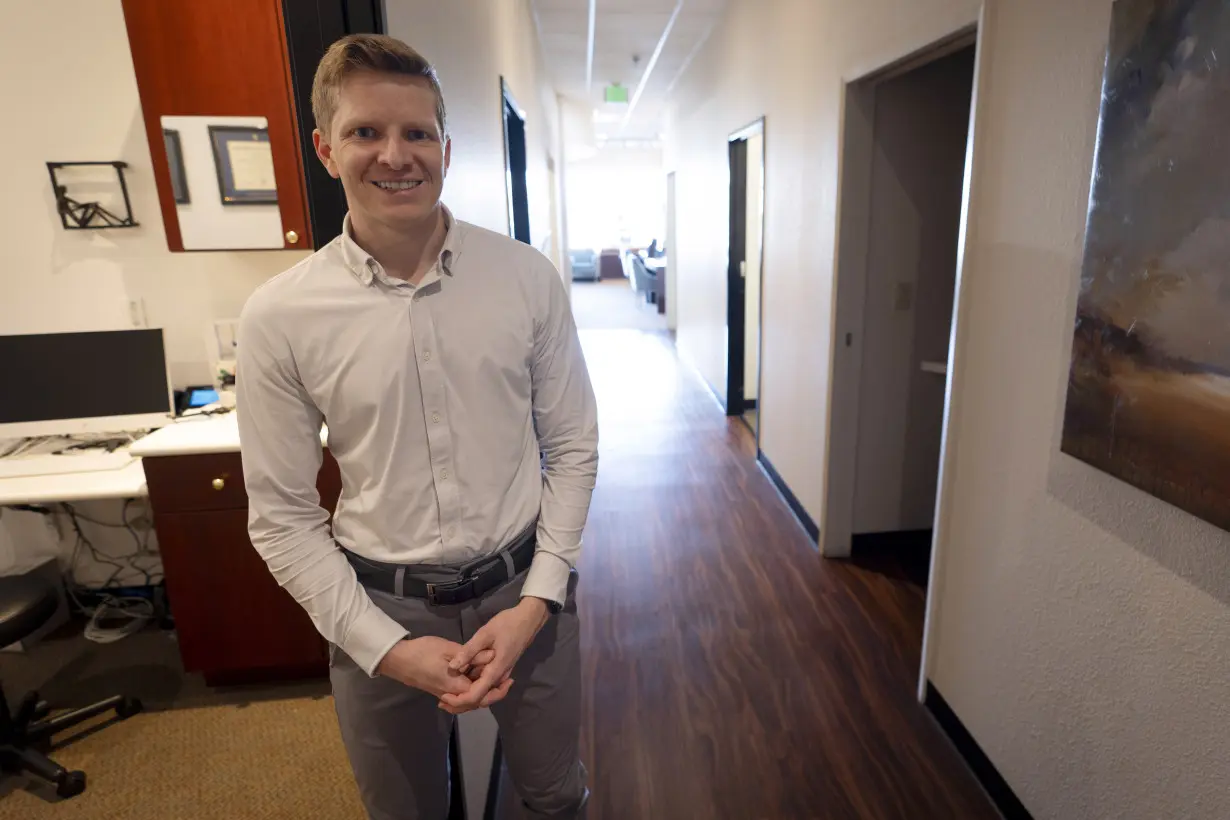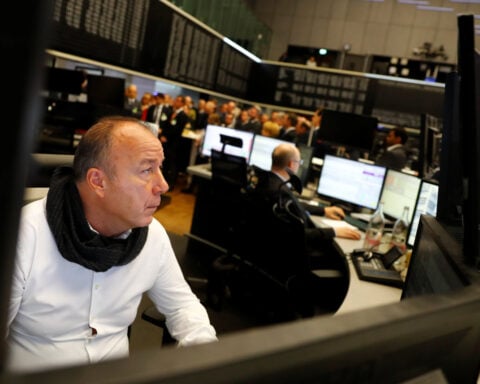SACRAMENTO, Calif. (AP) — When Hunter Morgan bought an optometry practice in Southern California three years ago, one of the first things he did was start seeing patients who use Medicaid — the government-funded health insurance program for low-income people.
The previous owners had not accepted patients on Medicaid, which covers roughly a third of California's 39 million residents. But Morgan felt he had a responsibility to serve people in need.
Just five months later, Morgan said, he had to stop treating Medicaid patients because of the paltry pay. He charges $175 for eye exams, but the most he could get from Medicaid was about $40. That made it difficult to pay his staff and pricey rent in the upscale beach community of Encinitas, 25 miles (40 kilometers) north of San Diego.
“We couldn't function that way,” he said.
California Gov. Gavin Newsom and his Democratic allies in the state Legislature have greatly increased the number of people on Medicaid, including all eligible adults in the state who are in the country without legal permission. But while California's Medicaid now covers some 15 million people, the rates it pays to doctors have not kept up.
It has contributed to a crisis at some rural hospitals, some of which needed an emergency loan from the state Legislature last year to keep from closing. And it has made it harder for people enrolled in Medicaid to find doctors willing to treat them, forcing some to drive long distances to seek care.
Health care providers have been clamoring for California’s Medicaid program, known as Medi-Cal, to pay them more. But California doesn’t have extra money thanks to back-to-back multibillion-dollar budget deficits. To pay doctors more, Newsom and the state Legislature chose to raise taxes — but not in the way you might think.
Just about every state taxes things like hospitals, nursing homes and ambulances to help pay for their share of Medicaid. Since 2005, California has taxed managed care organizations — the private companies that contract with the state to provide Medicaid benefits.
But unlike with most taxes, the companies don’t have to pay all of it. The state pays most of it for them, then uses the money to trigger more federal payments for Medicaid. That means more money for everybody.
Last year Newsom signed a law that greatly increased this tax. It means the state will get $19.4 billion through 2026. On Thursday the Legislature is scheduled to vote to increase it again, generating an estimated $1.5 billion more.
“California is pulling every lever of government to increase access to affordable, high-quality health care across the state,” Newsom said in a statement to The Associated Press.
In the past, California has used that kind of surplus to balance its budget. But this time the state has vowed to use part of it to pay doctors more for treating Medicaid patients.
How much, and who will get it, will be fully decided this year. The first increases last year went to primary care doctors, maternity care and some mental health services. This year’s increases, which have not yet been approved by the Legislature, would include things like obstetric, vaccine and abortion services — and optometry.
For optometrists, Newsom is proposing to raise rates to match those paid by Medicare, the federal government’s health insurance program for people 65 and older. That could mean California’s roughly 8,000 licensed optometrists would get a lot more money for Medicaid patients — roughly $130 per exam instead of $47.
Health care providers have cheered these increases, but they're still nervous. California's budget deficits have only been growing.
“If things really did get bad, I think, they could use the money for other purposes," said Kristine Schultz, executive director of the California Optometric Association.
Newsom already wants to change the tax increase he signed last year, which included $11 billion more to hike provider payments over five years. This year, because of the deficit, Newsom wants to use $8 billion for provider payments over four years. Providers would still get the same increase, but it would expire sooner.
Plus, the federal government must approve California’s tax on managed care organizations every three years. The Biden administration has signaled recently that it wants to reduce how much money states can collect, and that could force California to lower the tax in the future, cutting into its ability to continue paying doctors higher rates.
“It’s a real concern,” said Stuart Thompson, senior vice president for governmental affairs for the California Medical Association, during a recent public hearing before lawmakers. “We don’t want to create a scenario in which we have a program that goes for four years and then we reach the cliff.”
Republicans in the Legislature have criticized Newsom's plan to raise the tax again. There is "no guarantee it stays in the health care space,” said Assemblymember Vince Fong, a a Republican and vice chair of the Assembly Budget Committee.
But Assembly Democrats appear to view the plan more favorably. Democrat Akilah Weber, chair of the budget subcommittee that oversees health care spending, said the deficit is requiring “some changes” but she remains committed to the rate increases.
An increase for optometrist payments would be good news for people in Fresno, a Central Valley city with a large population of low-income farm workers who are on Medicaid.
At one eye care practice in the city, Fogg Remington, Medicaid patients historically made up about 15% of clients. But it stopped accepting new Medicaid patients in January, citing low rates and a new law requiring health care workers to be paid at least $25 per hour.
Fogg Remington optometrist Dr. Anthony Chavez said that if California were to increase its rates, it would be a “no brainer” to reverse that decision.
“We want to help these people,” Chavez said.

 Germany's economy shrank for the second consecutive year in 2024
Germany's economy shrank for the second consecutive year in 2024
 Italy, Albania, UAE sign deal for energy subsea interconnection
Italy, Albania, UAE sign deal for energy subsea interconnection
 European shares advance as bond yields ease; soft inflation powers UK stocks
European shares advance as bond yields ease; soft inflation powers UK stocks
 Bayern Munich signs US youngster Bajung Darboe from LAFC
Bayern Munich signs US youngster Bajung Darboe from LAFC
 Novak Djokovic breaks a tie with Roger Federer for the most Grand Slam matches in tennis history
Novak Djokovic breaks a tie with Roger Federer for the most Grand Slam matches in tennis history
 China's RedNote: what you need to know about the app TikTok users are flocking to
China's RedNote: what you need to know about the app TikTok users are flocking to








